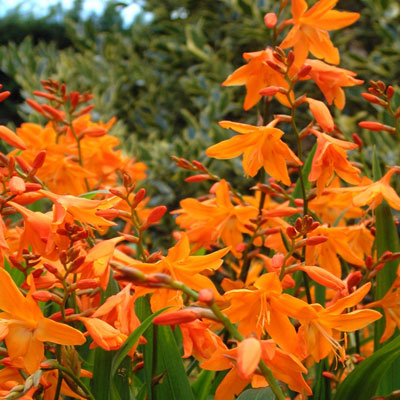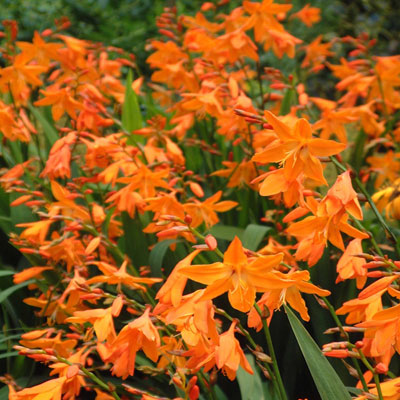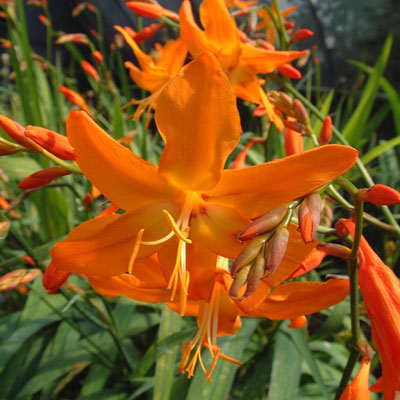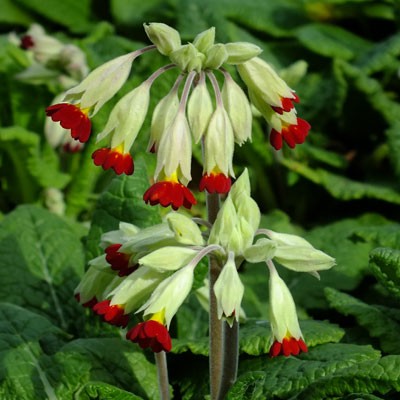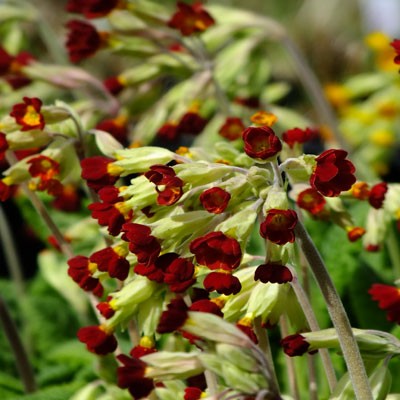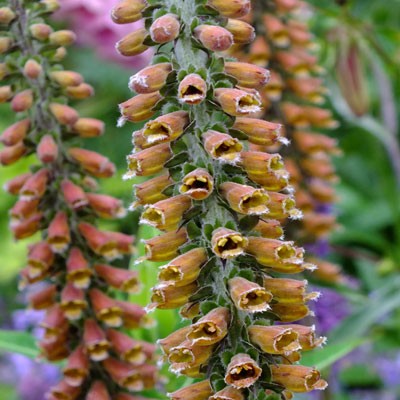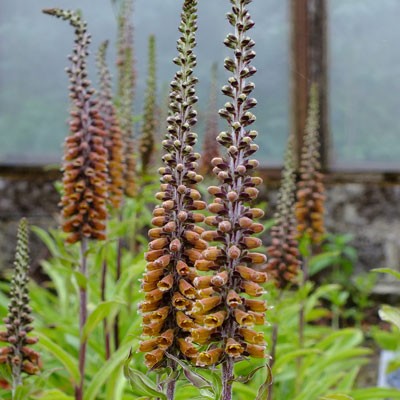Description
Crocosmia x crocosmiiflora ‘Star of the East’
If you’ll excuse the pun; a real star of a variety. At fully 10cm it has possibly the largest flowers of all of the crocosmias and they come in a really clean bright shade of tangerine that really shines out. the buds are darker and the centre paler. They are not only large but flat and held so that they look outwards rather than down. Grow it in a really sunny spot, but one that doesn’t dry out in the Summer to get the best out of it. Bred in 1910 by George Davison and still one of the best.
Crocosmia, or Montbretias as they are colloquially known, are really valuable for adding warm red and orange tones into the summer border, a contrast in shape and form to the wealth of summer daisies in flower at that time. Given conditions where they are happy they can be rewarding and long lived. They retreat each winter to a corm – a swollen stem – each year producing new bulb like structure. Over the years these annual corms can pile up to form lengthy strings with the older corms having some role in providing nutrition to the youngest active corm. It is on account of this that the old practice of annual lifting of corms can be detrimental. Also old wisdom had you lift and replant corms late in the year, a practice that didn’t give the corms enough time to settle before winter.
Crocosmia are relatively easy to grow and it might seem that all Crocosmia are similar and require the same treatment. There is a universal desire for a warm spot in sun or dappled shade and a soil that is neither excessively heavy, nor boggy. However, a little study of the parent species can lead to a greater understanding of the condition individual varieties would really like. Several of the species are to be found growing in light woodland in the wild (C.aurea and C.potsii) or in damp grassland (C.paniculata). As a generalisation they come from environments which are moist for the growing season.
The varying hardiness of Crocosia cultivars can be attributed to the contribution the parents make to their makup. Varieties of Crocosmia potsii are considered the most cold hardy, with those of Crocosmia aurea being the least. Cold isn’t the only hardiness issue, Winter wet is also a factor, with Crocosmia potsii being exposed to a fair degree of moisture all year around in its native environment whilst other species such as Crocosmia pearsei needing a lot more exposure to warm dry conditions to be happy.
In the growing season, Crocosmia masoniorum likes it on the warm and dry side, tending to decline in rich moist soils. This contrasts with the requirement of Crocosmia x crocosmiiflora for a moist, rich warm spot to produce of its best. Cultivars of Crocosmia paniculata tend to be shy to flower in dry conditions.
If you live in an area where you need to lift Crocosmia corms against the winter cold, it is essential to keep them from drying out over winter. Store them in peat or shaving over winter to prevent them dessicating and when it comes to Spring plant them in cool conditions to allow them to rehydrate before shooting. Planting warm from a dry corm is a recipe for disaster.
The name comes from the Greek ‘krokos’ = saffron and ‘osme’ = smell, referring to the strong smell of saffron given off by the dried flowers when immersed in water.

















































